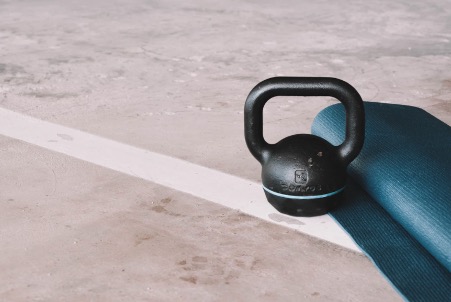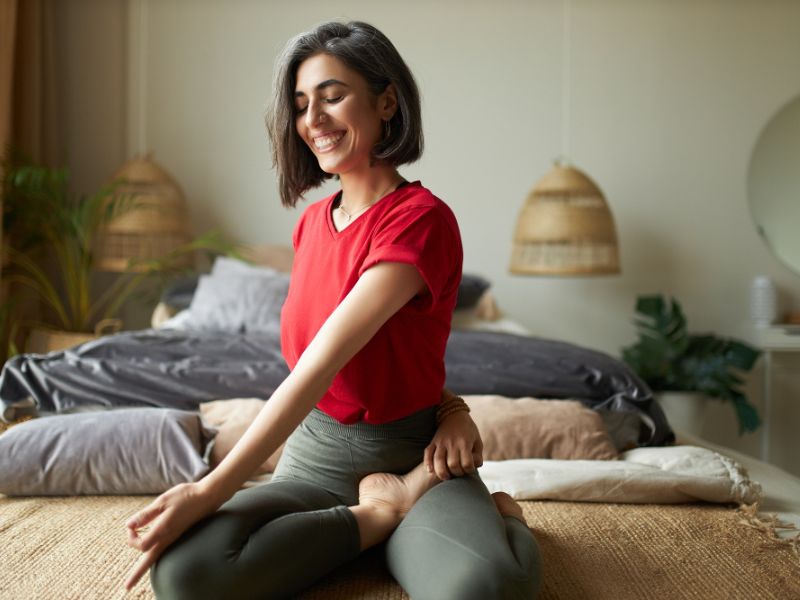Article by Sara Luper from Keep moving care
 According to Google trend data, the search term exercising with anxiety has received a 5.100% uplift in searches within the last month alone.
According to Google trend data, the search term exercising with anxiety has received a 5.100% uplift in searches within the last month alone.
Such a rise in searches suggests that much of the UK acknowledges that the consequences of Covid-19 is impacting their mental and physical health. Several studies show that exercise can aid in the management (and in some cases cure) of anxiety, working to reverse its symptoms and prevent further attacks. However, for many sufferers of anxiety, its effects are debilitating, and the notion of exercise is unthinkable. What is more, it can lead many to believe that strenuous exercise may enhance the physical symptoms of anxiety as they share the same physical signs. For example, irregular breathing patterns, quickened heart rate, a ‘tight’ chest and perspiring. Here, Health Practitioner Sara Luper at Keep moving care shares what happens to the body when it experiences anxiety, how to exercise safely with anxiety and the science behind how working out links to the sympathetic nervous system and relieves anxiety.
The science of anxiety
Essentially, anxiety is the body’s reaction to stress. Everybody will experience anxiety at certain times, as it is incredibly common to feel its symptoms in the run up to events such as job interviews, entering a new social environment or taking an exam. For most, this kind of anxiety acts as a driving force as it highlights the significance of experiences and urges a person to excel. This type of anxiety comes and goes and does not hinder day to day activities. However, for some, the symptoms of anxiety rarely fade and can be so debilitating that it prevents them from partaking in everyday activities.
There are several theories behind what causes anxiety however, it is the fight or flight theory that is referred to most often. ‘The fight or flight response is an inducement by the body in a reaction to something that it perceives to be of danger’, says Luper. ‘When the body identifies what it believes to be a threat, stimulation of the sympathetic nervous system, which oversees the body’s involuntary response to stressful circumstances, sends messages to the adrenal glands. This releases the stress hormones, adrenaline, cortisol, and noradrenaline which in turn, causes the typical symptoms of anxiety. These can include shaking, sweating, feeling queasy, lack of concentration and breathlessness. It is thought that the fight or flight response derives from our ancestors when we were required to survive in open spaces with several threats’.
Establish your intentions
Before embarking on an exercise regime, understand its objectives. ‘A positive gained from lockdown is that a majority of people are no longer exercising with the sole purpose to burn calories’, says Luper. ‘There is a renewed understanding of the gains working out has on your mental health. Exercising in the morning helps regulate the body as working out calms the central nervous system. This is especially important in the morning as it is when cortisol levels are at their highest (they gradually fall throughout the day). Hence, why anxiety sufferers tend to feel that their symptoms of anxiety are at their highest when they wake’.
‘Morning workouts also aid in regulating your circadian rhythm (a natural internal process that activates the body’s sleep/wake cycle). Lack of sleep can fuel anxiety as sleep poverty intensifies sparks anxiety by triggering the brains amygdala and insular cortex, both of which are responsible for the processing of emotions.’
‘Alter your perspective with regards to the purpose of exercise. Recognise that any exercise works to supress the impact of anxiety and improve sleep hygiene. Shifting your objective of what you want to achieve through a workout alleviates the pressure of feeling the need to partake in intense cardio or excessive weightlifting. This will ensure that there is no further build-up of anxiety surrounding the ‘need’ to exercise and supress any symptoms that mirror that of a panic disorder’.
Modify what you deem exercise!
We have all been there, we decide that we should embark on a new exercise regime and we do too much too soon. We try to run a marathon before we can jog shorter distances. ‘Studies indicate that a 10-minute walk can create the same benefits as a 45-minute workout with regards to easing anxiety disorders’, says Luper. ‘If you are feeling breathlessness, experiencing an increased heart rate or sweating due to the feeling of panic, do not feel obligated to take part in extreme cardio. A short walk, some light stretches and or even some breath work all fall under the umbrella of exercise.’
‘Of course, it is important to be safe. If you opt to implement breathing exercises into your routine, bear in mind that inhaling deeply may not be your area of focus. There is a direct link between the inhalation of oxygen and the sympathetic nervous system however, exhaling connects to the parasympathetic nervous system. The parasympathetic nervous system preserves energy and works to slow the heart rate, seeing that it oversees our ability to relax. Work to control your breathing and try not to take to many breaths in a short space of time. Instead, practice the following:
- Breath in for 4 counts
- Hold for 7 counts.
- Exhale for 8 counts
Try to voice a ‘woosh’ sound when you exhale. This will encourage you to really focus on that exhale’.
The workout is not the decision maker
If recent events have taught us anything, it is the importance of structure. ‘Structure aids in curbing procrastination and works to give our days purpose. I am a huge advocate of them however, I advise lenience when it comes to exercise. Once a routine is established, those that exercise can feel that their exercise regime dictates the rest of their day. In other words, they feel overly obligated to partake in their routine. This can create additional pressure and it can be easy to feel that your workout dictates the rest of your day. Loosely establish a time to exercise however, do not feel forced to participate if you are not up to it/in the mood. Listen to your body. If you are feeling pressured and it is fuelling your anxiety, take a break. Do not ‘beat yourself up’, over it. Instead, actively participate in something that you enjoy. Whether that is as small as a lie in or as big as a long walk.
WeAreTheCity covers the latest female centric news stories from around the world, focusing on women in business, careers and current affairs. You can find all the latest gender news here.
Don’t forget, you can also follow us via our social media channels for the latest up-to-date gender news. Click to follow us on Twitter, Facebook, Instagram, and YouTube.








